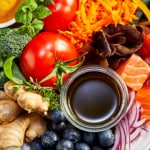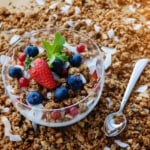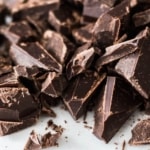Enjoying picnics and barbecues with family and friends is the epitome of summer. Don’t let unsanitary conditions spoil your picnic. One in six Americans contract a foodborne illness each year, reports the Center for Disease Control and Prevention (CDC). Warmer summer weather increases your chances of food poisoning, also referred to as a foodborne illness. The ideal temperature for foodborne bacteria growth is between 90 to 110 degrees Fahrenheit (32 to 43 degrees Celsius). When the temperature of your food is within this range, warmer weather and humidity provide the perfect environment for bacteria to thrive and flourish.
While you enjoy your favorite foods outside during the warm summer months, hot food should be kept at 140 ˚F or warmer; cold food should be kept at 40 ˚F or cooler.
These best practices against food poisoning are essential:
Clean, Separate, Cook, and Chill.
Clean
Wash your hands often and keep prep surfaces clean throughout the day. Bring soap and a container filled with water for washing or use moist towelettes if a water source is unavailable. Avoid placing cooked food on a platter, plate, or cutting board that had previously held something raw unless it was washed in hot soapy water and rinsed thoroughly. Remember to also wash your hands after a game like cornhole or playing fetch with pets.
Wash and dry all fruits and vegetables prior to leaving for your picnic. Even if you plan to peel fruit, it’s important to wash them. Bacteria can make its way inside and spread when you cut or peel. Place larger fruit like watermelon and pineapple in a strainer to get them evenly clean.
Click the link below for an informative video from the USDA on the importance of washing during food safety prep.
Separate
Bacteria can spread long before your picnic. Keep raw poultry, meat, seafood in sealed containers or bags to prevent their juices from dripping on other foods in your refrigerator. Did you know that the USDA recommends that eggs be stored in their original carton and on a shelf in the main compartment of the refrigerator rather than the door? This will keep them fresh and at an adequate temperature,
Keep beverages, produce, and raw meats in separate coolers that are clean of food residue. Keeping these items separate will lessen the chance for cross contamination.
Fill up those coolers with cold food and ice! The fuller the cooler the colder the food. Also, it’s best to keep coolers in the shade or under an umbrella away from the sun’s rays. Try limiting the amount of times you open and close the cooler with perishable foods.
Designate specific utensils for raw and cooked foods. Always use clean serving utensils that have not been contaminated with raw food or juices.
Click the link below for an informative video from the USDA on the importance of separation during food safety prep.
Cook
Bacteria that causes food poisoning multiplies the fastest in the “danger zone” temperature range of 40˚F and 140˚F. There’s no better way to tell if a food is fully cooked than with a food thermometer. Measure the temperature in the thickest part of the food avoiding bone and fat. Clean your thermometer after each use. Place your food in a slow cooker or chafing dish to ensure the temperature stays at 140 ˚F or above.
Hamburgers should be cooked to 160˚F. If a thermometer is not available, make sure the hamburger is brown inside without any pink. Chicken should be cooked to at least 165˚F.
Click the link below for an informative video from the USDA on the importance of cooking temperatures during food safety prep.
https://www.foodsafety.gov/keep/basics/cook/index.html
Chill
Food poisoning bacteria can grow within 2 hours unless the food is properly refrigerated. Cold food should be held at 40˚F or below. If the outside temperature is 90 ˚F or above, the perishable food has just 1 hour before bacteria starts to grow. Use lids and citronella candles to keep your foods safe and bug free. Always let hot foods cool completely before storing them back in a cooler. If perishable food has been sitting out for 2 hours or more, play it safe and toss it!
Click the link below for an informative video from the USDA on the importance of thawing during food prep.
Here’s a summer picnic pizza recipe the whole family will enjoy.
This article is also published on the Pennsylvania Academy of Nutrition & Dietetics (PAND).






